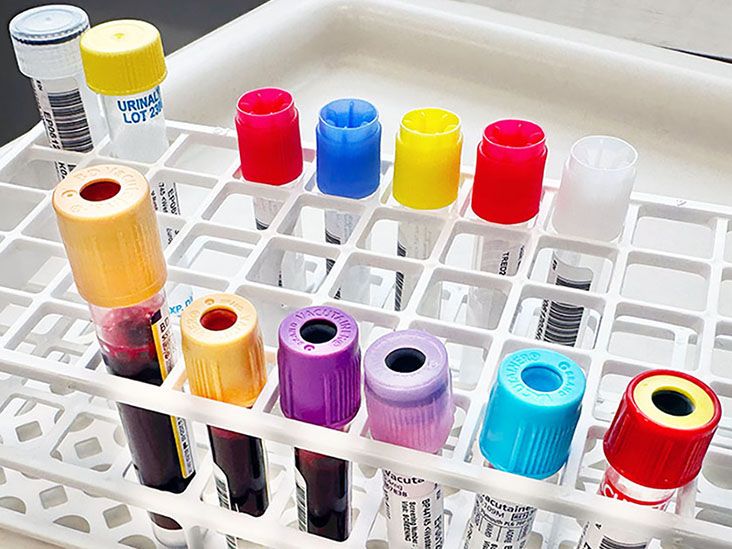Type 2 diabetes is a chronic condition that occurs when a person’s blood sugar levels become too high. A person can treat it with insulin and other medications. These medications reduce blood sugar levels to prevent symptoms and complications.
A person can develop type 2 diabetes at any age, but it most commonly occurs
More than 37 million people in the United States have diabetes. Of those, 90–95% have type 2 diabetes.
This article examines how a person can manage type 2 diabetes and outlines some medications people can use to treat the condition.

Type 2 diabetes is a condition that occurs when a person’s blood sugar levels
Blood sugar is the body’s main source of energy. It mostly comes from the food a person eats.
The hormone insulin helps this blood sugar get into the cells, and the cells then use the sugar for energy.
If a person has type 2 diabetes, their body either does not make enough insulin or does not effectively use the insulin it creates.
These insulin issues can prevent the cells from using up the blood sugar. This means that the sugar stays in the blood and a person’s blood sugar levels rise.
A person with type 2 diabetes can experience symptoms such as frequent urination, increased hunger and thirst, fatigue, blurred vision, and unexplained weight loss.
Managing type 2 diabetes can reduce a person’s symptoms and their chances of complications.
A person
- being mindful of their diet
- getting enough physical activity
- monitoring their blood sugar levels
- managing their stress level
A doctor may also suggest that a person with type 2 diabetes take insulin. This can help regulate their blood sugar levels to reduce their symptoms and risk of complications.
There are several other medications that a person with type 2 diabetes can take to treat their condition.
Below are some of the medications a person can take to regulate their blood sugar levels.
Alpha-glucosidase inhibitors
Alpha-glucosidase inhibitors (AGIs)
AGIs inhibit enzymes that convert complex nonabsorbable carbohydrates into simple absorbable carbohydrates.
These enzymes include:
- glucoamylase
- sucrase
- maltase
- isomaltase
By delaying the absorption of carbohydrates in the small intestine, AGIs reduce the rise in blood sugar levels after meals.
The two main types of AGIs are acarbose (Precose) and miglitol (Glyset).
Biguanides
Biguanides are a group of medications that
These effects mean that biguanides can lower blood sugar levels.
Metformin is the most common form of biguanide. It is the
Dopamine agonists
Dopamine agonists are medications doctors prescribe to treat Parkinson’s disease. However, these drugs may also be effective for type 2 diabetes. One example is bromocriptine.
More research is required to identify the mechanism of action. However, studies show that bromocriptine
Dipeptidyl peptidase-4 (DPP-4) inhibitors
These drugs can help a person’s pancreas make more insulin. This can help the person’s cells absorb sugar from their blood, lowering their blood sugar levels.
DPP-4 inhibitors can also decrease the amount of glucagon the pancreas secretes. Glucagon is a hormone that can increase a person’s blood sugar levels and prevent them from dropping too low.
Below are examples of DPP-4 inhibitors:
- alogliptin (Nesina)
- alogliptin-metformin (Kazano)
- alogliptin-pioglitazone (Oseni)
- linagliptin (Tradjenta)
- linagliptin-empagliflozin (Glyxambi)
- linagliptin-metformin (Jentadueto)
- saxagliptin (Onglyza)
- saxagliptin-metformin (Kombiglyze XR)
- sitagliptin (Januvia)
- sitagliptin-metformin (Janumet and Janumet XR)
- sitagliptin and simvastatin (Juvisync)
Glucagon-like peptide-1 (GLP-1) receptor agonists
GLP-1 receptor agonists are a class of medication that
GLP-1 receptor agonists stimulate insulin secretion, lowering a person’s blood sugar levels. These drugs can also inhibit the production of glucagon and slow down stomach emptying.
Additionally, research suggests that this class of medications can promote an average weight loss of
Below are some examples of GLP-1 receptor agonists:
- albiglutide (Tanzeum)
- dulaglutide (Trulicity)
- exenatide (Byetta)
- exenatide extended-release (Bydureon)
- liraglutide (Victoza)
- semaglutide (Ozempic)
Meglitinides
Meglitinides are a class of medication that can lower a person’s blood sugar by
These drugs may work as a treatment on their own or alongside other medications such as metformin.
The body rapidly absorbs meglitinides, and they have a half-life of less than 60 minutes. This means the drugs have a fast onset and a short duration of action. Therefore, they are appropriate for managing blood sugar levels after meals.
Medical professionals often recommend taking meglitinides about
The two main types of meglitinides are nateglinide (Starlix) and repaglinide (Prandin).
Sodium-glucose transporter 2 (SGLT2) inhibitors
SGLT2 inhibitors
This means the kidneys do not hold on to glucose, and it exits the body via the urine. This helps reduce a person’s blood sugar levels.
Below are four examples of SGLT2 inhibitors:
- canagliflozin (Invokana)
- dapagliflozin (Farxiga)
- empagliflozin (Jardiance)
- ertugliflozin (Steglatro)
Sulfonylureas
Sulfonylureas are the
These drugs stimulate insulin secretion from the pancreatic beta cells, which helps reduce a person’s blood sugar levels.
Below are some examples of sulfonylureas:
- glimepiride (Amaryl)
- glimepiride-pioglitazone (Duetact)
- glimepiride-rosiglitazone (Avandaryl)
- gliclazide
- glipizide (Glucotrol)
- glipizide-metformin (Metaglip)
- glyburide (DiaBeta, Glynase, Micronase)
- glyburide-metformin (Glucovance)
- chlorpropamide (Diabinese)
- tolazamide (Tolinase)
- tolbutamide (Orinase, Tol-Tab)
Thiazolidinediones
Thiazolidinediones (TZDs) are a class of medications that act on intracellular metabolic pathways. TZDs can enhance insulin action and increase insulin sensitivity to reduce a person’s blood sugar levels.
TZDs can cause some undesirable side effects. They can increase dose-related fluid retention in
Below are a some examples of TZDs:
- rosiglitazone (Avandia)
- rosiglitazone-glimepiride (Avandaryl)
- rosiglitazone-metformin (Avandamet)
- pioglitazone (Actos)
- pioglitazone-alogliptin (Oseni)
- pioglitazone-glimepiride (Duetact)
- pioglitazone-metformin (Actoplus Met, Actoplus Met XR)
A person with type 2 diabetes may also need treatment with insulin to help regulate their blood sugar levels.
They may take insulin in various ways,
- needle and syringe
- insulin pen
- insulin pump
- insulin inhaler
- jet injector
- artificial pancreas
If a person has type 2 diabetes and obesity, a doctor may recommend that they have weight loss surgery. This surgery can make a change to help a person lose a large amount of weight and bring their blood sugar levels back to a healthy range.
A person with type 2 diabetes may also take medications to treat other conditions associated with the disease, such as high cholesterol and heart disease.
Maintaining a healthy lifestyle can also help a person manage type 2 diabetes. This may include:
- attempting to reach or maintain a moderate weight
- being physically active
- eating a nutritious, balanced diet
- managing stress levels
- avoiding smoking or attempting to quit smoking
If a person experiences persistent side effects from taking diabetes medication, they should make an appointment with a doctor. A doctor may be able to adjust a person’s medication or dose to reduce or eliminate adverse effects.
If a person feels very unwell after taking a medication, they should contact a doctor immediately. In rare cases, people can have a severe reaction to a medication. If a person has trouble breathing, collapses, has a seizure, or is unresponsive, someone near them should call 911.
A person must always wear a diabetic identification bracelet to ensure they get the correct treatment in an emergency.
Type 2 diabetes is a chronic condition that has no cure. It can lead to life threatening complications.
However, by managing the condition and using medications to treat it, a person can reduce their risk of complications and improve their quality of life.
A 2016 meta-analysis that included data from more than 13,000 people with type 2 diabetes showed that diabetes self-management education can reduce a person’s risk of death.
How should I manage diabetes if I’m pregnant?
If a person with type 2 diabetes becomes pregnant, they can be at risk of certain complications. High blood sugar during pregnancy may
- fetal development abnormalities
- cesarean delivery
- preeclampsia
- early birth
- low blood sugar
- miscarriage
- stillbirth
A pregnant person with diabetes can manage their condition by:
- seeing a doctor early and often
- maintaining a healthy diet
- exercising regularly
- taking pills and insulin as their doctor recommends
- treating high and low blood sugar quickly
- checking their blood sugar often
What is the safest type 2 diabetes medication for people with kidney disease?
Metformin is the first-line medication to treat type 2 diabetes in adults. It is safe for most people with chronic kidney disease, according to a
Type 2 diabetes is a condition that causes a person’s blood sugar levels to rise too high. This occurs because a person’s body either does not produce enough insulin or does not effectively use the insulin it produces.
A person with type 2 diabetes can experience symptoms such as frequent urination, increased hunger and thirst, fatigue, blurred vision, and unexplained weight loss.
A person can manage their diabetes by making an effort to maintain a moderate weight, eating a balanced diet, and getting regular exercise. If their doctor recommends it, they may also use insulin to manage their blood sugar levels.
A doctor may prescribe any of several types of medication to help a person treat their type 2 diabetes, such as AGIs, biguanides, DPP-4 inhibitors, and sulfonylureas.


